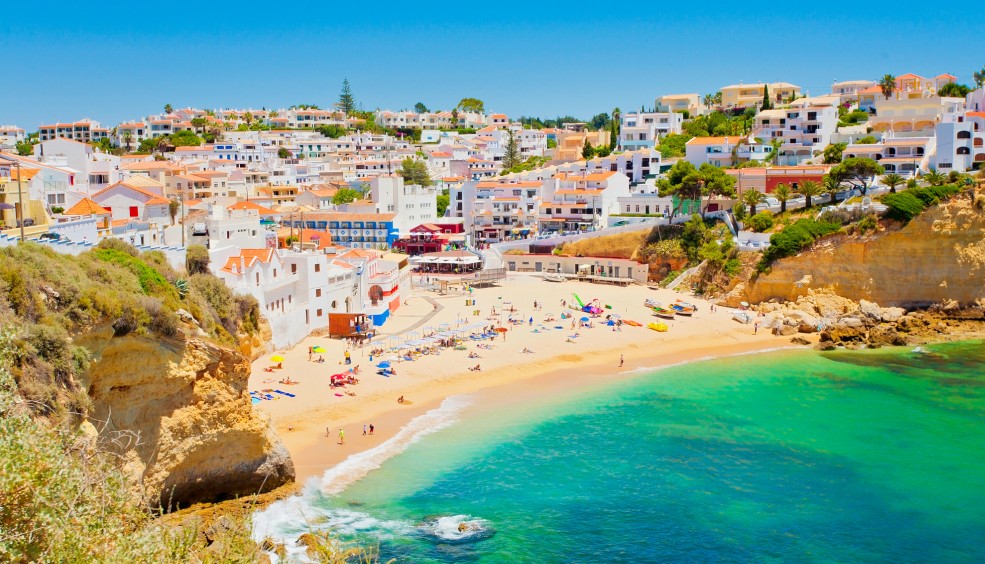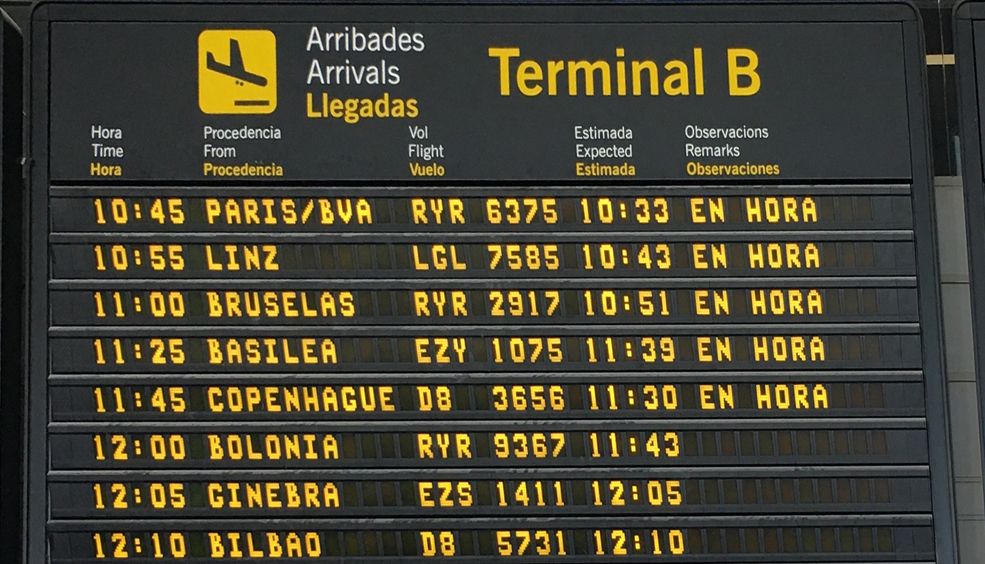7 cheap destinations to enjoy before summer arrives
Do you fancy going away before the official summer holidays, to beat the crowds? Make a note of these ideas.
more infoIATA code: 3 letters so you don't get lost
BCN, CDG, VIE, LGW.... All frequent flyers (and regular players of Trivial Pursuit) know what these three letters mean. They are IATA codes, in other words, the three letters that identify every single airport in the world.
more infoWhy is it better to travel in autumn? 6 reasons to get away
Golden leaves on the trees, sunsets, chestnuts... many things come to mind when we hear the word "autumn". Summer is long gone and it seems like all that is left to do now is stay at home and wrap up warm. Hold on a minute! Stay at home, you say? Not necessarily! Travelling in autumn has become the best option for many reasons. Not convinced? Here are a few of them:
more infoThe Modernist Side of A Coruña
Modernism emerged in the late-19th and early-20th century, marking a break in style with the past, in line with the prevailing cosmopolitan, entrepreneurial mindset of the moment.
In 1883, the city needed to expand, leading to the construction of its famous Ensanche district,which spans the present-day streets of Juana de Vega,Picavia,Feijoo, Plaza de Lugo and Plaza de Pontevedra.
With the wealth they had acquired from foreign trade, the local bourgeoisie commissioned luxury residences in this new area, modelled on those of Vienna, Paris, Prague, Budapest and Berlin, in an outward show of their prosperity and cultural pursuits. This enabled them to distinguish themselves from the old Corunnan aristocracy, who still lived in the Ciudad Alta and Ciudad Vieja districts in dilapidated mansions with dark rooms, lacking proper ventilation or glazed window balconies, with their backs to the sea and to modernity.
Strictly speaking, Modernism came to the city in 1906 with the arrival of the Cuban architect, Ricardo Boán y Callejas, and the Corunnan architect ,Antonio López Hernández, who brought the new trends in building design from Austria, Switzerland and Germany. They also brought journals, catalogues and photos from those countries featuring designs by the Austrian, Otto Wagner, and the Belgian, Victor Horta.
One of the most striking features of these houses are the female faces adorning some of the buildings that are still standing. They were mostly inspired by the countenance of an English lady, Elizabeth Siddal, the wife of the Pre-Raphaelite painter, Dante Gabriel Rossetti. She was immortalised in the guise of her languid, enigmatic beauty and her long tresses following her death from an overdose of laudanum, a mixture of opium and alcohol.
Modernism in A Coruña was influenced by the ornamental style of the English architect, Owen Jones (1808-1874). Local artists decorated the facades and doorways with irises, horse-chestnut leaves, water plants, roses and camellias in multi-coloured garlands which seem to reach out to the passer-by and lavish pleasure on the senses.
Galleries are awash with the Mackintosh Rose motif of Charles Rennie Mackintosh, as well as twirling, sap-bearing plant stems. The transparent glass surfaces spread out among them like dragonfly wings. However, Japanese influences also come to the fore in the form of embossed irises, reeds and butterflies on lilies, star-shaped holly leaves and lotus flowers framing windows and lifts, by way of a country-like, ecological architecture. Enjoy a Modernist route through the city – download the guide here.
Modernist Top 5 in A Coruña
1. Casa Rey (1911)
The work of Julio Galán, his architecture distils the essence of the glass city. The rippling cornice, the Mudéjar inspired glazed ceramics and the wrought iron balconies made in the Wonenburger foundry make it a veritable dolls house for the ladies of those times that adorned its balconies with their head-dresses of gardenias and palm leaves. Chocolate was one of the exotic wares shipped from the Indies and other colonies to the port of A Coruña, and chocolateries dating from that period are still open to the public on the streets of Riego de Agua, Plaza de Lugo and Estrecha de San Andrés. Hence the origin of the popular Corunnan demonym ofcascarilleiros(huskers),an allusion to the cocoa husks which filled the streets with their aroma. Plaza de María Pita, 12.
2. Casa Molina (1915)
Designed by Rafael González Villar. The building was the home of Don Raimundo Molina, a representative of Royal Dutch Lloyd and consul of the Netherlands. He was also the father of the well-known mayor, Don Alfonso Molina. Influenced by the Italian Modernism of Turin, the garlands and draped ribbons of the building form a theatrical final curtain to the Old City. C/ Santiago, 2.
3. Kiosko Alfonso (1912)
Also designed by Rafael González Villar, this is a magnificent example of early-20th-century recreational architecture. With its rectangular floor plan, it operated as a café, music hall and cinema, the central screen of which divided the auditorium into two rooms. In the first room, the audience saw the positive film, while a negative of the film could be viewed at a lower fee from the other. Converted into an exhibition hall in 1982, the original Modernist decoration is still intact, including dragons which surround and immerse the audience in a world of mystery and fantasy. Jardines de Méndez Núñez.
4. Compostela, 8 (1910)
Also the work of Julio Galán Carbajal. The foyer, with access at no. 8 Calle Compostela, is the most striking entrance hall in the city. Walls, ceilings and the archway leading into the lift turn the space into an original stuccowork greenhouse, brimming with intertwined water plants, lotuses, lilies and irises. The lions at the entrance, the eagle and the caryatids on the cornice form a symbolic defence of the house’s residents, reminiscent of ancient Persian palaces.
5. Plaza de Lugo, 13 (1912)
Lastly, this bourgeois residence designed by Antonio López Hernández, linked to the family of the Corunnan actor, Fernando Casado Arambillet (better known as Fernando Rey), features overflowing ornamentation as an outward show of the economic prowess of its residents. It is theatrically adorned with a large garland of roses, leading the eye towards the huge female caryatid dominating the ensemble. The decorative syntax makes this the most beautiful building in A Coruña.
Don’t wait to see these Modernist architectural jewels in A Coruña. Check out our flights here.
more info





